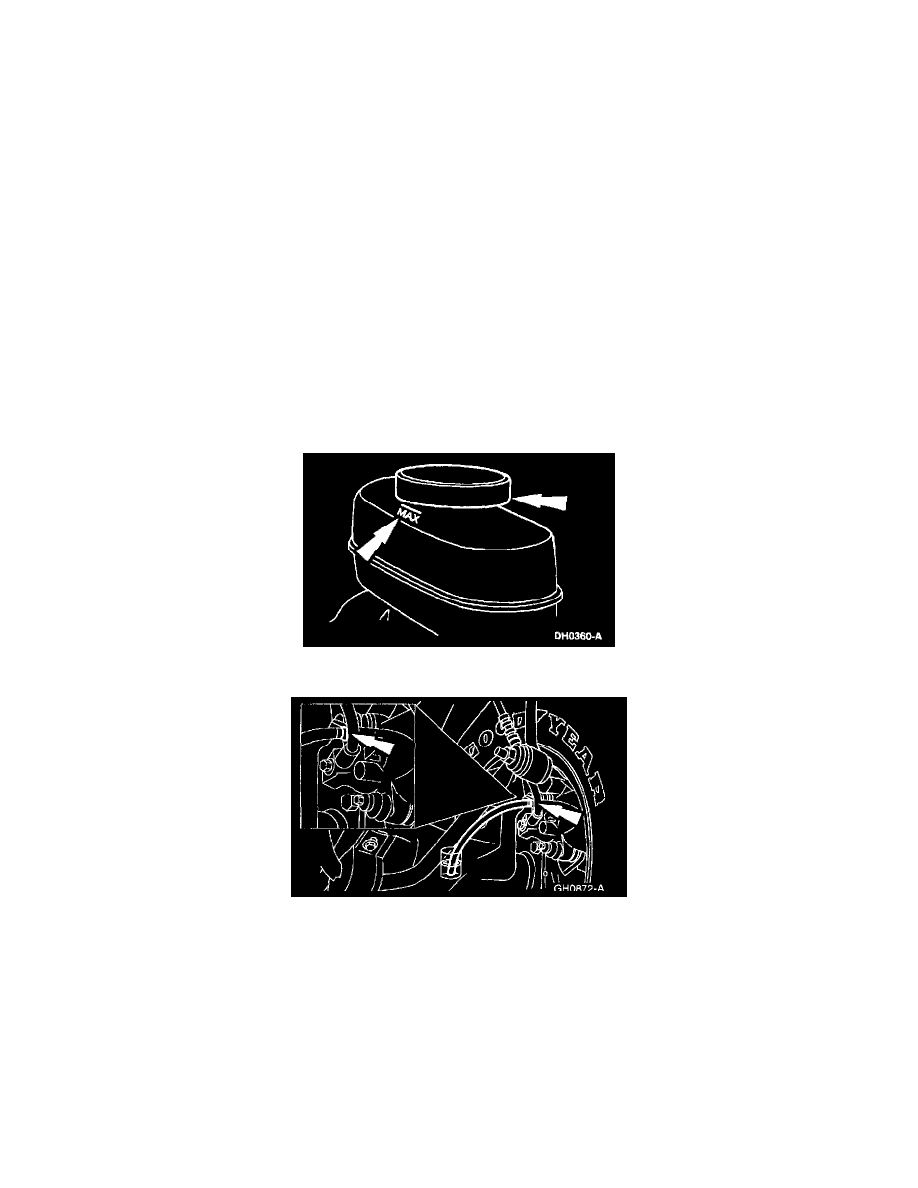F 150 Super Crew 2WD V8-4.6L SOHC VIN 6 (2003)

Brake Bleeding: Service and Repair
Bleeding - System
Manual
WARNING: Use of any brake fluid other than approved DOT 3 or DOT 4 will cause permanent damage to brake components and will
render the brakes inoperative.
WARNING: Brake fluid contains polyglycol ethers and polyglycols. Avoid contact with eyes. Wash hands thoroughly after handling. If
brake fluid contacts eyes, flush eyes with running water for 15 minutes. Get medical attention if irritation persists. If taken internally, drink
water and induce vomiting. Get medical attention immediately.
CAUTION: Do not allow the brake master cylinder reservoir to run dry during the bleeding operation. Keep the brake master cylinder reservoir filled
with the specified brake fluid. Never reuse the brake fluid that has been drained from the hydraulic system.
CAUTION: Brake fluid is harmful to painted and plastic surfaces. If brake fluid is spilled onto a painted or plastic surface, immediately wash it with
water.
NOTE: When any part of the hydraulic system has been disconnected for repair or installation of new components, air can get into the system and
cause spongy brake pedal action. This requires bleeding of the hydraulic system after it has been properly connected. The hydraulic system can be
bled manually or with pressure bleeding equipment.
1. Connect the scan tool DLC cable adapter into the vehicle data link connector (DLC) under the dash and follow the scan tool instructions.
2. Clean all dirt from and remove the brake master cylinder filler cap and fill the brake master cylinder reservoir with the specified brake fluid.
3. NOTE: Bleed the brake system in the order displayed on the scan tool.
Place a box end wrench on the bleeder screw. Attach a rubber drain tube to the bleeder screw and submerge the free end of the tube in a container
partially filled with clean brake fluid.
4. Have an assistant hold firm pressure on the brake pedal.
5. Loosen the bleeder screw until a stream of brake fluid comes out. While the assistant maintains pressure on the brake pedal, tighten the bleeder
screw.
-
Repeat until clear, bubble-free fluid comes out.
-
Refill the brake master cylinder reservoir as necessary.
